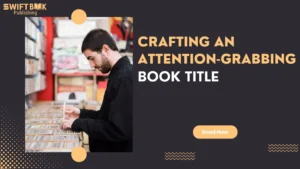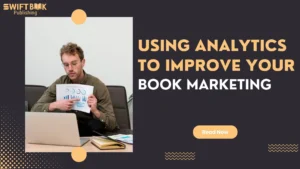Publishing isn’t just about putting words on a page. It’s about making sure every reader can access your story, your research, or your knowledge, regardless of ability. That’s where accessible eBooks design comes in. It’s not a trendy add-on or a bonus feature. It’s a basic standard that every modern author and publisher should be meeting.
If you’ve never thought about how someone using a screen reader might experience your eBook, or whether your font choices make it readable for people with dyslexia, now’s the time to fix that. Accessibility isn’t just about compliance. It’s about respect, inclusivity, and reaching more readers with content that works for everyone.
And with the rise in ebook writing services and digital-first publishing platforms, there’s no excuse for skipping these fundamentals anymore.
What Makes an eBook Accessible?
Let’s be clear. An accessible eBook doesn’t just mean it looks nice on Kindle. It’s about making sure readers with visual, cognitive, or motor challenges can navigate, comprehend, and enjoy the book.
A properly designed eBook should allow screen readers to interpret the text easily. It should include alternative text for images, use logical heading structures for navigation, and steer clear of layout choices that create friction for the reader. Everything from font size to colour contrast needs a rethink if you want to avoid shutting people out unintentionally.
And this goes double if you’re planning a multi-format book release. A paperback that looks beautiful doesn’t automatically convert into a user-friendly ePub. That’s why working with formatting experts, either via book editing services or dedicated accessibility professionals, should be on your checklist from day one.
Where Authors Usually Go Wrong
It’s easy to miss the mark if you’re formatting on your own. Many authors fall into common traps, such as fancy fonts, justified text blocks, or overusing italics and underlines. These look fine on screen, but they’re a nightmare for many assistive tools.
Relying too heavily on visual cues without backing them up with semantic HTML is another issue. If you highlight a heading by bolding it instead of tagging it properly, screen readers won’t know it’s a section title. That turns your neatly structured book into a confusing wall of text for someone relying on technology to interpret it.
It’s one of the most overlooked self-editing mistakes, especially for first-time authors.
Building Accessibility Into Your Publishing Workflow
Accessibility shouldn’t be the last step. You should think about it from the moment you start outlining your book. If you’re using diagrams, infographics, or illustrations, can they be described meaningfully in words? If you’ve got a complex table of contents, is it navigable on all devices?
This is where professional services come in. Whether you’re using ebook writing services or working with your own designer, clarity about your accessibility goals matters, and if you’ve partnered with a company for outsourcing book publishing, ask upfront about their accessibility standards. Don’t assume it’s baked in. It often isn’t.
From tagging chapter headings to embedding alt text and ensuring file compatibility across devices, good formatting can’t be rushed.
Collaborating With Experts for a Better Reading Experience
You don’t have to tackle this alone. There are specialists in book distribution channels and digital accessibility who know exactly how to make your content shine without excluding anyone.
If you’re creating an audiobook version too, this is the moment to collaborate with audiobook narrator professionals who understand pacing, clarity, and the nuances of accessible audio. Just like visual formatting, audio storytelling also benefits from thoughtful planning.
And if you’re working with a marketing team, make sure your promo materials follow the same inclusive standards. That includes teaser graphics, your book media kit, and even your book promotional video subtitles.
Why Accessibility Matters for Author Branding
Let’s be honest. Authors are businesses. And just like any business, how you treat your audience says a lot about your values. Building accessibility into your book isn’t just the right thing to do. It’s a solid author branding decision.
It signals professionalism. It broadens your reach. And it tells your readers that you care about their experience, not just your sales.
Think of it this way. If you’re investing in book marketing analytics to track engagement, why would you ignore a whole segment of the market that literally can’t access your book?
Strategic Advantages of Accessible eBooks
Making your eBook accessible can also boost your visibility. Search engines favour well-structured content. Retailers are increasingly favouring inclusive titles. And the more discoverable and usable your book is, the more chance it has of finding the right readers.
Pair this with a solid SEO plan, yes, SEO for authors applies to eBook listings too, and you’ve got a major competitive advantage.
And if you’re targeting specific sales seasons, like planning a publishing timeline for a holiday release, accessible versions can help ensure no reader is left out during the busiest time of the year.
Accessibility and the Global Market
Here’s where it gets even better. Accessibility isn’t limited to English-speaking markets. If you’re exploring book translation publishing, be mindful that accessible formatting should carry across all versions. A beautifully translated book loses impact if the layout breaks in certain languages or platforms.
This goes hand-in-hand with global distribution. If you’re targeting libraries, schools, or international reader groups, accessible formatting might be a requirement, not a nice-to-have.
Final Note
There’s no shortcut to creating a great eBook, and accessibility is a non-negotiable part of that journey. Accessible eBooks design is not just about ticking a box. It’s about being a better author, a more thoughtful publisher, and a smarter business.
Whether you’re refining your file with book editing services, building promotional content, or just getting your first draft together, make accessibility part of every decision.







